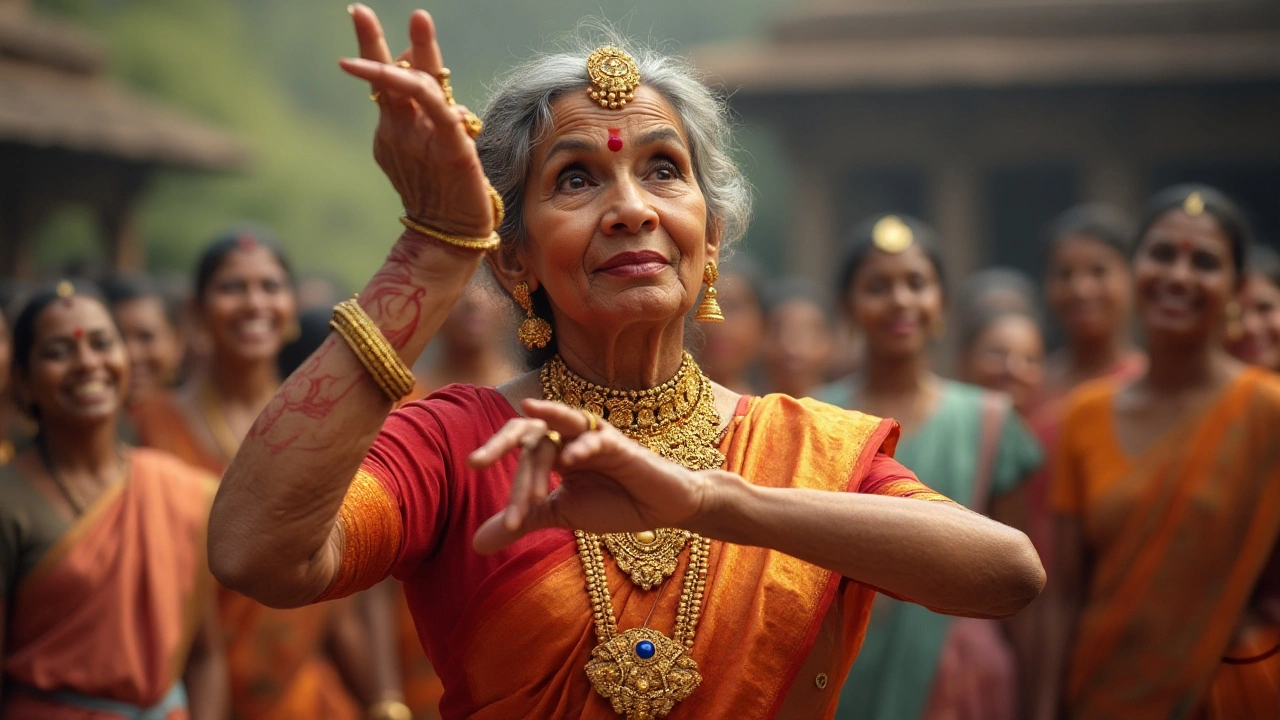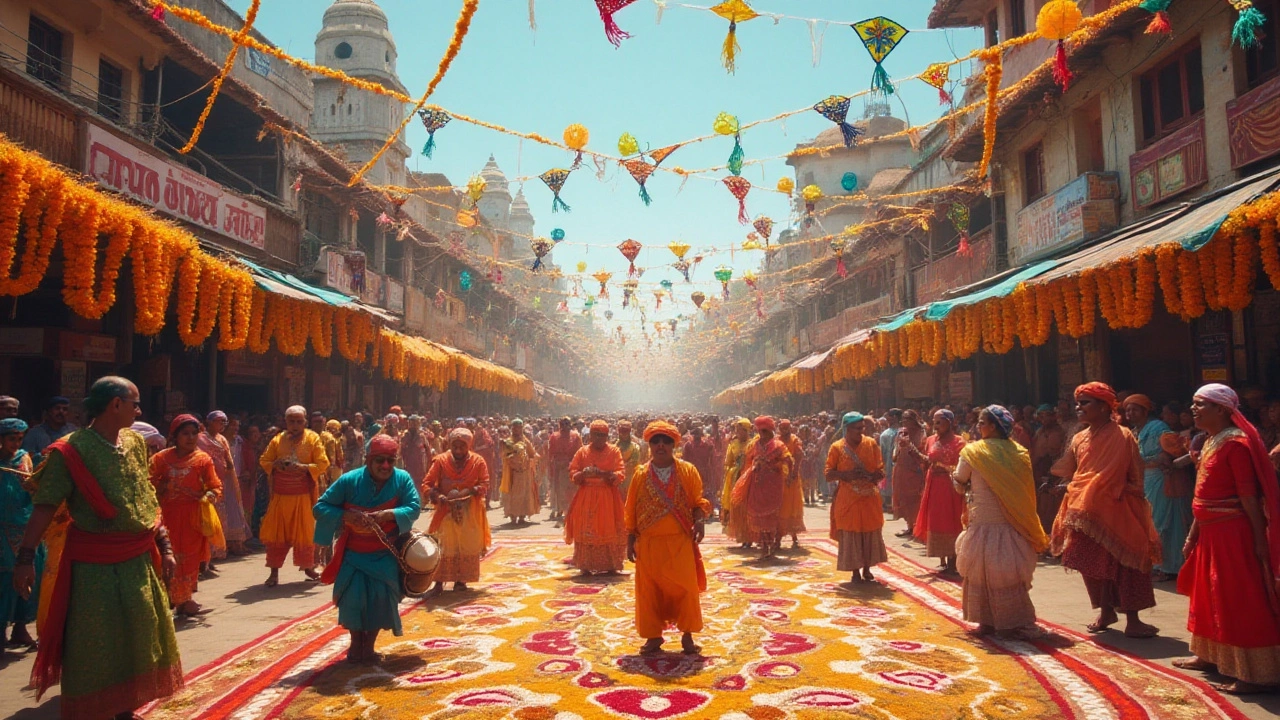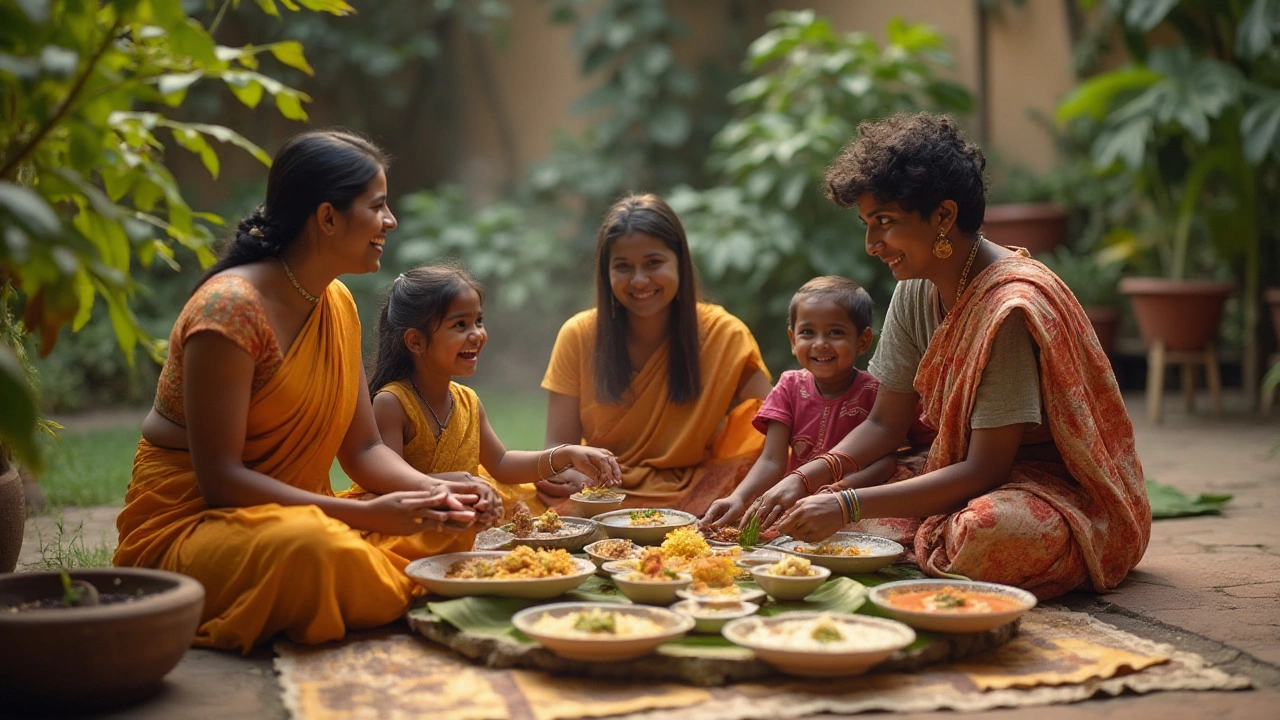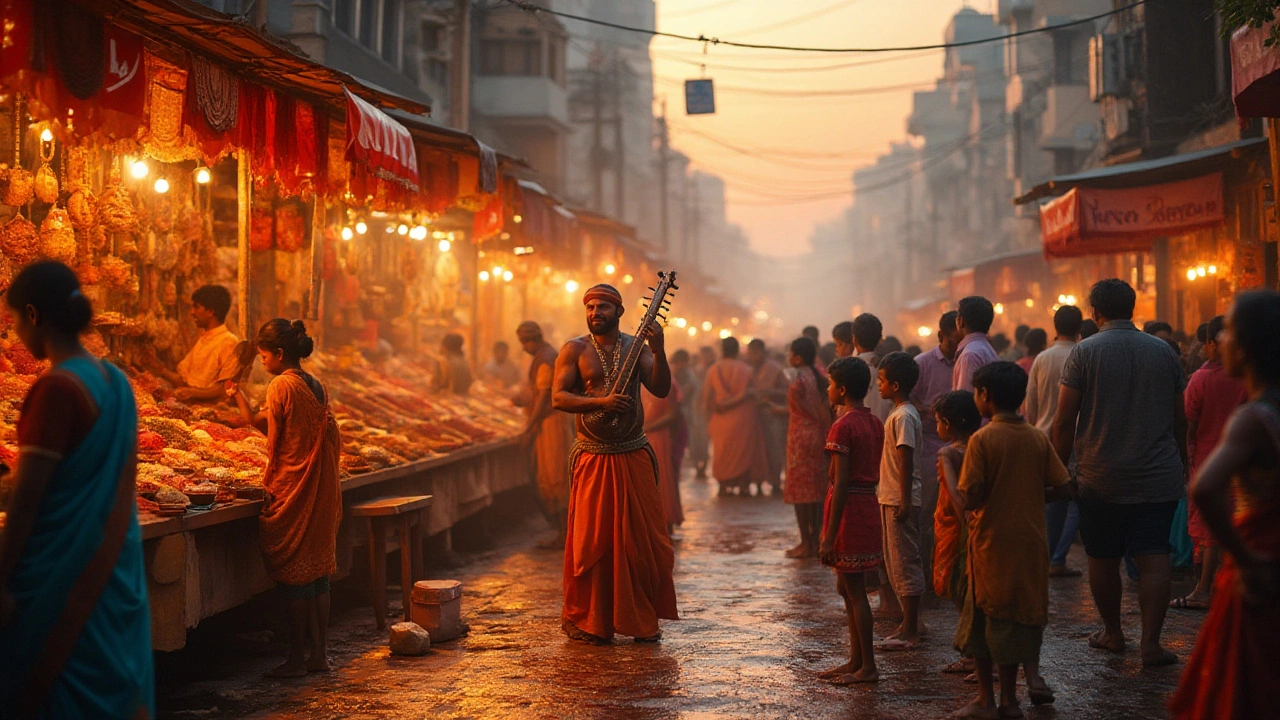India, a land where culture speaks in myriad tongues, offers a kaleidoscope of experiences to those who venture into its heart. With a history as old as time itself, the fabric of India is woven with stories of empires, trade routes, and a multitude of traditions that ripple through its present. Delve deep into the cultural lore, and one discovers not just a culture, but a continuum of traditions evolving through centuries.
From the majestic Himalayas in the north to the sun-kissed beaches of the south, each region in India tells its unique story. This diversity is not just limited to geography; it's inherently present in every festival celebrated, in the vibrant palette of its artistic expressions, and in the aromatic allure of its cuisines.
It's a place where spirituality and everyday life converge seamlessly, where temples, mosques, and churches stand as a testament to a long history of acceptance and spiritual growth. This ancient land flourishes in its traditional practices and it invites the curious traveler to partake in its celebrations.
- Historical Influence and Diversity
- Spiritual Practices and Festivities
- Artistic Expressions
- Culinary Diversity
Historical Influence and Diversity
The history of India is a rich tapestry woven with the threads of various civilizations, dynasties, and cultural exchanges that have taken place over millennia. The Indus Valley Civilization, which thrived around 3000 BCE, marked the beginning of urban culture in the Indian subcontinent. Archaeological findings suggest that this civilization was advanced in trade, agriculture, and town planning, creating a foundation for subsequent societies. This ancient civilization eventually gave way to the Vedic Age, where the roots of what we now recognize as Hindu culture began to take form. During this period, the sacred texts, Vedas, were composed, providing a spiritual guide that is still followed by millions today.
The political landscape of India witnessed a great change with the rise of empires, such as the Mauryan and Gupta empires, which saw advancements in science, art, literature, and mathematics. Ashoka, one of the most celebrated rulers of the Mauryan dynasty, is famous for spreading Buddhism not only across India but also across Asia, leaving a lasting impact on the spiritual practices of the continent. The Gupta period, often referred to as the Golden Age of India, saw scholars like Aryabhata and Kalidasa producing work that would influence generations to come.
According to historian R.C. Majumdar, "The Gupta period was characterized by a flowering of culture that was notably Indian."
With the spread of trade, India's culture absorbed influences from Persia, Central Asia, and the Mediterranean world. The later arrival of Islamic rulers, represented by the Delhi Sultanate and the Mughal Empire, introduced Persian art, architecture, and culture, adding to the diverse Indian heritage. The Mughals, in particular, left a legacy of intricate architectural wonders like the Taj Mahal, a testament to the blend of Persian and Indian styles. This era also saw the fusion of Indian traditions with Islamic influences, creating a unique cultural synthesis seen in music, poetry, and cuisine.
The colonial period brought about significant changes in social structure, economics, and technology, laying the groundwork for modern India. The British Raj introduced Western education, which catalyzed an intellectual awakening and a renaissance in Indian literature and reform movements. This era also laid the foundation for India's struggle for independence, with leaders like Mahatma Gandhi drawing from cultural and historical legacies to shape a movement based on non-violence and civil disobedience. As India shook off the shackles of colonialism in 1947, it embarked on a journey of amalgamating its rich history with the aspirations of a modern nation-state.

Spiritual Practices and Festivities
India's cultural landscape is immensely enriched by its varied spiritual practices and numerous, colorful celebrations. The country is often seen as a crucible of religions, with Hinduism, Jainism, Sikhism, and Buddhism all having been born here. Spirituality in India interweaves seamlessly with daily life, influencing morality, social norms, and the very ethos of its people. The vibrant spiritual tapestry is not only confined to the grandiose temple complexes or serene monasteries but flows through the bustling streets, echoing in the chants and temple bells. Every festival, whether it be Diwali, Eid, Christmas, or Vaisakhi, showcases a unique identity while resonating with the unity and diversity that define Indian culture.
As one meanders through this astounding land, they are often enveloped by the aroma of incense, the chants of prayers, or the rhythmic beats of drums. Take, for instance, Varansi, one of the world's oldest living cities, which offers a visceral glimpse into the deeply-rooted spiritual practices of Hinduism. The ghats of the Ganges come alive during the evening Aarti, where the harmonious blend of sight, sound, and scent invigorates the senses, leaving an indelible imprint on the soul. Pilgrims, travelers, and locals congregate in this confluence of humanity, epitomizing the strength of spiritual tradition in connecting diverse lives.
Not far from Varanasi lies Bodh Gaya, the sacred center of Buddhism. It was here that Prince Siddhartha attained enlightenment under the Bodhi tree and became the Buddha. This site attracts global attention, inviting practitioners and seekers to walk the path of peace and spiritual enlightenment. Monks in flowing saffron robes recite mantras, contributing to the tranquil atmosphere that deeply impacts visitors, emphasizing the importance of enduring spiritual practices. The thrumming vitality of India's spiritual landscape is further amplified during its many religious celebrations which dot the calendar.
Every festival in India, irrespective of its religious significance, is celebrated with great enthusiasm. Take Diwali, the festival of lights, for instance. Streets sparkle with lights, homes are adorned with colorful rangolis, and there's a perpetual cheerfulness that permeates the air. According to a study by the National Sample Survey Office, over 70% of Indian households participate in festival celebrations at least once a year.
"In the midst of darkness, light prevails," remarked Jawaharlal Nehru about Diwali, capturing its essence beautifully.On the other hand, the Islamic holy month of Ramadan brings families and communities together to break the fast, sharing meals and engaging in altruism and reflection.
The interplay between religious doctrines and celebratory practices reveals not only the extreme sentimental value to the locals but an invitation to outsiders enthralled by the confluence of tradition and modernity. It can be exhilarating for a traveler to witness the kaleidoscope that is Holi, where colors burst through the air, drenching all in a shared joy, or the disciplined melodious celebrations of Guru Nanak Jayanti that echo through the crispness of the winter months. These festivals do not just serve as a reminder of spiritual convictions but are grand illustrations of the shared human experience, transcending temporal barriers and paving paths to peace, friendship, and coexistence.

Artistic Expressions
When exploring the depth of India's culture, one cannot overlook the vastness and diversity of its artistic expressions. A country with as many art forms as regions, India captivates through its dance, music, and sculpture. The classical dance forms, such as Bharatnatyam from Tamil Nadu, Kathak from the northern regions, and Odissi from Odisha, are not just performances but spiritual journeys for the dancer and the audience. Each movement and gesture becomes a narrative, an age-old tale passed down through generations, inviting audiences to partake in a distant but living tradition.
Indian music, with its classical roots in Carnatic and Hindustani traditions, provides a complex soundscape that offers both sophistication and soul. These are not mere musical forms but entire systems of theory, with intricate compositions and improvisations that come alive in performances. The tabla's resonant beats and the sitar's melodic strings create a symphony that speaks the language of the soul. Renowned musician Ravi Shankar once said,
"Music is a common denominator for all people."Such is the power of India's musical heritage, unifying its diverse populace through a shared love for sound.
Art in India isn't confined to stages; it's etched on ancient temples, painted on canvases, and molded into sculptures. The rock-cut temples of Ellora and Ajanta are not just architectural marvels but artistic treasures, narrating stories from Buddhist, Hindu, and Jain traditions. Modern Indian art, too, reflects the country's rich tapestry. Artists like M.F. Husain and Amrita Sher-Gil have brought Indian art to the global forefront, weaving contemporary themes with traditional techniques.
But artistic expressions in India are not limited to formal galleries or historical sites; they thrive in the everyday lives of its people. From the vivid Rangoli patterns that decorate doorsteps during festivals to the folk songs that still echo in village gatherings, these everyday art forms seamlessly blend with daily life. In rural areas, handicrafts like Madhubani paintings and Kutch embroidery provide a livelihood while perpetuating timeless arts. These forms are not static; they evolve, adapting to modern needs while keeping their core intact.
An interesting aspect is how technology now aids in preserving these art forms, helping them reach global audiences without borders. Digital platforms showcase local art, providing artisans a larger viewer base. However, the essence remains unchanged—a portrayal of identity, tradition, and beauty encapsulated in art. Cultural tourists visiting India have the chance to not just witness but engage with this vibrant artistic landscape, ensuring that while they delve into Indian heritage, they also contribute to its ongoing story.

Culinary Diversity
The culinary landscape of India is as expansive and diverse as the country itself, offering a gastronomic journey that tantalizes the senses and challenges preconceived notions of spice and flavor. From the fiery curries of South India to the Mughlai richness of the North, Indian cuisine is a symphony of tastes that tells the story of its regions and their histories. Each dish carries not just the fragrance of spice but of stories passed down through generations, reminding us of India’s cultural tapestry.
The nation is often dubbed as the land of spices, and rightfully so. Indian homes typically stock as many as 20 different spices, and the process of blending them is both an art and a craft. Take, for example, the iconic Garam Masala, a blend used across India in myriad forms. Its specific combination can vary from household to household, each variation offering a taste of the family’s history and preferences. Moreover, certain staple ingredients like ghee (clarified butter) and fresh herbs like coriander and mint are uniformly embraced across regions, bridging diverse culinary traditions with common threads.
Indian cuisine also serves as a vibrant reflection of the country's extensive trade history and external influences. The Portuguese influence on Goan cuisine with its vindaloo, the Mughal's impact bringing rich gravies and biryanis to the subcontinent, and British additions like tea, which has become not just a beverage but an intrinsic part of daily life—each of these tells a story etched into the cultural tourism fabric of India. As Julian Baggini, a celebrated British philosopher, once observed,
"Food fabricates a narrative of cultural nourishment, offering insights into the evolution of societies and their histories."
One cannot overlook the street food culture that thrives in cities throughout India. Whether you are walking through the bustling markets of Delhi munching on spicy golgappas, or navigating the narrow lanes of Mumbai with a vada pav in hand, street food stands out as a pulsating heartbeat of Indian culinary tradition. These quick bites are short stories of flavor, each with its own fan following, and are loved by locals and tourists alike as emblematic of Indian heritage. For those savoring their culinary adventures, it's advised to embrace this variety cautiously, taking into account the famed Indian penchant for spice.
Indian cuisine is a reflection of its agricultural bounty, marked by regional specialties that depend heavily on local resources. In Punjab, you find an abundance of wheat-based dishes due to the fertile plains, while the coastal areas boast seafood with a coconut twist. In the extreme southern state of Karnataka, the practice of serving meals on a banana leaf is a celebration of simple yet sustainable eating habits. This reflects a deep connection to the land and respect for the produce it offers—values that hold a special place in Indian traditions.
To get a broader understanding of this culinary diversity, one needs to pay attention to the accompanying side dishes—chutneys, pickles, and breads that accentuate flavors in ways that vary astonishingly from one state to another. The beloved pickle, for example, is more than just preserved fruit or vegetable; it's a potent combination of spices, oil, and love that varies wildly in ingredients and intensity across regions. Thus, exploring India is incomplete without experiencing its culinary spectrum—not just the popular dishes listed in travel guides but the everyday meals that comfort the Indian heart.
For the adventurous palate, participating in a traditional Indian cooking class or touring a local market can offer a peek into the intricacies and passions that fuel this diverse culinary marvel. As you wander through the flavors, keep in mind the wisdom of age-old culinary practices and the innovations that keep the kitchens of India vibrant and exhilarating. After all, no two meals on this subcontinent are ever the same, and that is the essence of the culinary diversity that defines India.
